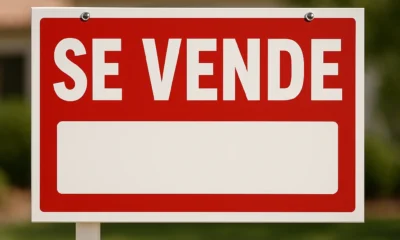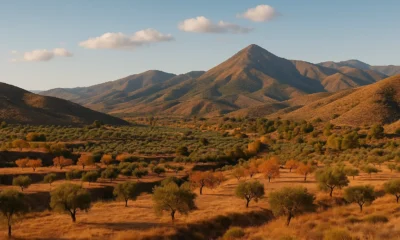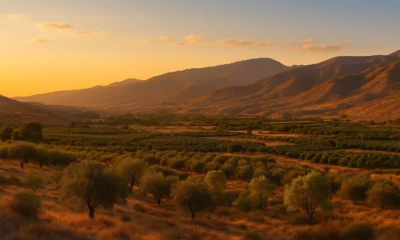Real Estate & Economy
Critical Minerals Almería: 7 Sites Powering Europe’s Future
Published May 12, 2025 | Category: Real Estate & Economy
TL;DR: Almería holds a strategic position in Europe’s push for critical minerals Almería. From rare earth elements in Níjar to lithium in Cuevas del Almanzora, the province could play a key role in the continent’s green future.
Critical Minerals Almería: 7 Strategic Mining Sites Shaping Europe’s Green Transition
Why Europe Needs Almería’s Critical Minerals
In a bid to reduce dependence on China and secure supply chains for green technologies, the European Union has launched the Critical Raw Materials Act. This plan mandates that by 2030, the EU must extract 10%, process 40%, and recycle 25% of its critical minerals needs internally. Almería, with its geological diversity and dormant mining zones, could become a vital link in this strategy.
Critical minerals such as lithium, cobalt, and rare earth elements are essential for EV batteries, wind turbines, and medical equipment. The EU’s reliance on imports—97% for magnesium and nearly 100% for rare earth processing—poses a significant risk. Tapping into Almería’s critical minerals could reduce this exposure and contribute to European resilience.
Where Critical Minerals Are Located in Almería
Several areas across the province have been identified for their critical mineral content. This reinforces the importance of critical minerals Almería in the regional and European context:
- El Hoyazo (Níjar): Alluvial deposits contain rare earths associated with garnet formations.
- El Arteal (Cuevas del Almanzora): An abandoned mining village with geothermal aquifers rich in lithium.
- Antas & Albox: Known sites for antimony, a critical metal used in flame retardants and alloys.
- Huércal-Overa: Contains titanium deposits, important for aerospace and defense industries.
- Alcolea, Turrillas & Dalías: Former barite mines, now under re-evaluation.
These locations are part of a broader geological map developed by the Instituto Geológico y Minero de España (IGME), indicating over 1,900 potential critical mineral sites across Andalusia.
Mining History: From Las Menas to Rodalquilar
Almería has a long and rugged history of mining. The iron mines of Las Menas in the Sierra de los Filabres employed nearly 3,000 workers until their closure in 1968. Entire communities were built around these operations, complete with hospitals and schools.
Rodalquilar, a striking valley within Cabo de Gata-Níjar Natural Park, saw a brief gold rush beginning in 1864. Its peak came in the 1950s with the daily processing of 600 tons of ore before shutting down in 1966. Today, its abandoned buildings attract tourists and photographers alike.
El Arteal, in Cuevas del Almanzora, was once home to 900 workers and featured a full-scale mining settlement with homes, schools, and even a cinema. Though silent today, the area is again under exploration for lithium extraction, a vital part of the province’s critical minerals potential.
Current Studies and Strategic Projects
The Spanish government and the CSIC are currently conducting feasibility studies at El Arteal, evaluating lithium-rich geothermal brines. These efforts tie into broader EU programs aiming to secure domestic lithium sources.
According to the CRMA, projects like El Arteal could benefit from fast-tracked permitting and EU funding. If proven viable, this site could complement other strategic lithium hubs in Portugal, Germany, and France and reinforce Almería’s role in critical minerals Almería supply.
Balancing Extraction and Sustainability
Restarting mining operations raises environmental concerns. Andalusian authorities emphasize sustainable practices, prioritizing low-impact methods and community engagement. Exploration activities are currently non-invasive and focus on potential rather than immediate exploitation.
In protected areas like Cabo de Gata-Níjar, stricter regulations apply, making environmental impact assessments a prerequisite before any project proceeds.
The Future of Critical Minerals in Almería
As Europe accelerates its green transition, Almería could emerge as a strategic resource hub—not just for its minerals, but for its role in economic diversification and technological progress. Local governments are cautiously optimistic, balancing heritage, environmental protection, and the promise of jobs and innovation.
For now, all eyes are on the data: the results of geological studies will determine whether Almería becomes a footnote in mining history or its next chapter in the era of critical minerals Almería.
For more updates from across the province, visit our News section or explore the Real Estate & Economy category.
Looking for broader coverage? More Almería news
Sources consulted
Real Estate & Economy
Almeria Property Prices 2025: Vera Leads Andalusia with Record 72.9% Rise
Published October 31, 2025 | Category: Real Estate & Economy
TL;DR: Vera tops Andalusia’s housing market with a record 72.9% rise in second-hand property prices, as Almeria province records one of the strongest annual growth rates in Spain’s coastal real estate.
Almeria Property Prices 2025: Vera Leads Andalusia with Record 72.9% Rise
The province of Almeria has become one of Andalusia’s standout performers in Spain’s property market during 2025. According to the latest Fotocasa Real Estate Index for October 2025, the average price of second-hand homes in the province rose by an impressive 14.3% year-on-year — the second highest in Andalusia, only behind Granada.
Within the province, the coastal municipality of Vera registered a remarkable 72.9% price increase over the past year, making it the fastest-growing property market in the entire region. It was followed by Cuevas del Almanzora with +33.8%, and Almeria city with +7.4% — proof that demand for both coastal and urban properties is intensifying.
Table of Contents
- 1. Market Overview: 2025 in Numbers
- 2. Vera’s Record-Breaking Growth
- 3. What’s Driving Prices in Almeria?
- 4. How Almeria Compares with Other Andalusian Provinces
- 5. Investment Opportunities and Rental Yields
- 6. Future Outlook for 2026 and Beyond
- 7. Conclusion
1. Market Overview: 2025 in Numbers
Across Andalusia, housing prices have shown robust momentum. Fotocasa data reveals that property values rose 0.6% month-on-month and 20.2% year-on-year across the region. Almeria ranked as the second-fastest growing province, with an average price of €1,579/m² in October — significantly above the 2024 figure of €1,381/m².
For context, the Andalusian average currently stands at €2,687/m², while national averages (INE data, September 2025) hover around €2,130/m². Despite being one of the most affordable Mediterranean provinces, Almeria’s growth rate now rivals that of Málaga and Cádiz, two much costlier coastal markets.
In Almeria city, prices climbed to approximately €1,828/m², representing a 7.4% annual increase. New-build developments in districts like Nueva Almería and Retamar recorded the highest per-square-metre prices, averaging between €2,100 and €2,400.
2. Vera’s Record-Breaking Growth
Vera’s 72.9% price jump is one of the most remarkable property surges in Spain this decade. Experts attribute this to a combination of factors: a rising number of international buyers, improved coastal infrastructure, and a significant reduction in available housing stock. The town’s average price per square metre now surpasses €2,000 for quality coastal properties.
The nearby municipalities of Cuevas del Almanzora (+33.8%) and Garrucha (+18%) also recorded substantial growth. These northern coastal towns attract European retirees and remote workers looking for affordability, safety, and year-round sun — all within a short distance of beaches and marinas.
Municipal data from the Ayuntamiento de Vera shows that building permits for single-family homes doubled between 2023 and 2025, mainly driven by mixed-use resort developments and second-home demand from the UK, France, and Northern Europe.
3. What’s Driving Prices in Almeria?
Several underlying dynamics explain Almeria’s sharp rise in property values during 2025:
- Limited new housing supply: Developers have been cautious since the pandemic, resulting in fewer available properties. The provincial supply of listings on Fotocasa dropped by 18% compared to 2024.
- Growing expat demand: The number of foreign buyers in Almeria rose by 21% year-on-year, led by British, Belgian, and Nordic buyers (source: INE foreign property transaction data).
- Improved connectivity: The ongoing construction of the AVE high-speed rail line between Murcia and Almeria — expected to open for tests in 2027 — is raising long-term investment appeal, especially for northern Almeria.
- Tourism rebound: 2025 has seen record hotel occupancy levels, particularly in Mojácar, Vera, and Carboneras, which indirectly increases short-term rental profitability.
- Inflation hedge: With European interest rates stabilising and inflation pressures easing, many households are investing in property as a safer long-term asset.
4. How Almeria Compares with Other Andalusian Provinces
Almeria’s +14.3% year-on-year growth outpaced Seville (+8.8%), Córdoba (+7.1%), and Huelva (+5.9%), although it still trails Granada (+15.1%) slightly. With Málaga averaging €4,351/m² and Cádiz €2,249/m², Almeria remains the most affordable coastal alternative in Andalusia — yet one that is rapidly catching up in performance.
The province’s housing price index has now risen for nine consecutive quarters, a streak unmatched since before the 2008 financial crisis. Analysts from the Spanish Housing Observatory (MITMA) note that Almeria’s market fundamentals are “strongly expansionary but not speculative,” supported by real demand and job creation in tourism, renewable energy, and logistics.
5. Investment Opportunities and Rental Yields
While the surge in prices raises concerns about affordability, Almeria still offers strong rental yields compared to other Mediterranean regions. According to recent data from Idealista, the province’s gross rental return for 2025 averages 7.1%, with some coastal zones like Adra and Garrucha exceeding 10% for short-term holiday lets.
In the luxury and mid-range segment, new-build apartments in Mojácar Playa and Vera Playa are priced between €180,000 and €350,000 — still well below similar properties in Málaga or Alicante. The inland market (such as Albox, Lubrín, or Arboleas) remains an attractive entry point for expat investors, where renovated cortijos start at around €90,000.
Real estate agencies report increasing enquiries from digital nomads and retirees looking for climate, safety, and affordable living. In addition, the local government’s focus on renewable energy and green infrastructure (through the Junta de Andalucía’s 2026 sustainability plan) is expected to boost economic confidence and urban quality of life.
6. Future Outlook for 2026 and Beyond
Looking ahead, Almeria’s property market is projected to maintain healthy growth through 2026, although the pace is expected to moderate after this year’s sharp rise. The Fotocasa Real Estate Index forecasts an average provincial increase of 7–9% for 2026, reflecting continued demand balanced by a modest increase in supply.
New urban developments planned near the future AVE station and the city’s northern districts could slightly stabilise prices, while Vera and Cuevas del Almanzora may see further double-digit growth due to limited available plots.
In the medium term (2027–2028), the arrival of high-speed rail, ongoing coastal regeneration, and potential tax incentives for sustainable housing are likely to keep Almeria among Spain’s most dynamic provincial markets.
7. Conclusion
The Almeria property market in 2025 is defined by rapid coastal appreciation, growing international demand, and strong fundamentals backed by infrastructure and economic expansion. While Vera’s +72.9% rise is extraordinary, the broader trend across the province confirms a consistent upward trajectory driven by real demand rather than speculation.
With an ideal mix of affordability, connectivity, and Mediterranean lifestyle appeal, Almeria continues to attract buyers seeking long-term value and lifestyle investment — setting the stage for a balanced but optimistic 2026.
For more updates from across the province, visit our Real Estate & Economy category.
Infrastructure
Almeria AVE Station: Underground Rail Hub to Transform the City by 2027
Published October 31, 2025 | Category: Infrastructure
TL;DR: The new Almeria AVE station and underground rail integration are progressing steadily, backed by official investments and construction milestones confirmed by Spain’s transport authorities.
Almeria AVE Station: Underground Rail Hub to Transform the City by 2027
The long-planned Almeria AVE station is moving forward as one of Spain’s key infrastructure projects for the southeast. Supported by the national government and ADIF Alta Velocidad, the new underground connection and intermodal terminal are set to reshape the city’s urban and transport network over the next two years.
The Soterramiento: A Milestone in Urban Transformation
The project’s core is the soterramiento — a 2.5-kilometre underground railway section beneath the Avenida del Mediterráneo and the El Puche district. This section removes level crossings, improves safety and reconnects neighbourhoods long divided by surface rail lines. According to the ADIF Alta Velocidad, construction of the underground corridor has passed the halfway mark and remains on schedule for completion by October 2026.
The overall investment for the soterramiento phase now totals approximately €187 million, including updated works and design adjustments confirmed in the project’s 2025 progress report published by the Ministry of Transport and Sustainable Mobility (MITMA).
The New Intermodal Station
Directly above the underground corridor, a fully modernised intermodal terminal is under construction. Covering around 4,800 m² on two levels, the building will house six tracks — three dedicated to high-speed AVE trains, two for conventional lines and one mixed-use service. The complex also includes a new bus terminal with 26 platforms and an underground car park for about 400 vehicles.
The design, developed by engineering firm Estudio Ayesa in coordination with ADIF, combines modern glass structures with the restored historic façade of the existing station. It is intended to serve as a unified hub connecting train, bus and road transport while maintaining harmony with Almeria’s coastal skyline.
Investments and Official Timeline
In October 2025, ADIF Alta Velocidad confirmed an additional €8.2 million investment for the Vera–Almeria stretch of the Murcia–Almeria high-speed line to install concrete slab track (vía en placa). This is part of the national rail modernisation programme overseen by MITMA.
Meanwhile, the Junta de Andalucía has included more than €24 million in its 2026 budget to support Almeria’s urban rail integration and intermodal station works. The regional and national governments have reaffirmed that the soterramiento will be completed in 2026, followed by AVE test operations in 2027.
Urban and Economic Impact
The Almeria AVE station is more than a transport project — it represents a complete redefinition of the city’s mobility and land use. By taking the railway underground, large urban spaces are being freed for public use, parks, and new residential developments. The elimination of surface tracks also improves traffic flow and air quality in eastern Almeria.
Economically, the project is expected to generate long-term benefits through faster connections to Murcia and Madrid, enhanced logistics for the port, and a significant boost to local tourism once high-speed services are operational.
Looking Ahead
Work on the underground infrastructure and the new terminal will continue through 2026. Once completed, Almeria will gain a state-of-the-art intermodal hub linking the port, bus network and high-speed rail — the largest public infrastructure upgrade in the province in decades.
Further project updates, technical documents and progress reports can be consulted via official sources such as ADIF Alta Velocidad and the Ministry of Transport and Sustainable Mobility.
For more updates from across the province, visit our Infrastructure category.
Real Estate & Economy
How the Garrucha Red Prawn Festival Boosts Tourism and the Local Economy
Published October 30, 2025 | Category: Real Estate & Economy
TL;DR: The Garrucha Red Prawn Festival 2025 attracted thousands of visitors and generated an estimated €0.4 – €1 million in local spending. Hotels filled up, restaurants stayed busy, and the town’s signature seafood — the Gambas Rojas de Garrucha — once again proved to be both a culinary and economic powerhouse for Almeria.
Table of Contents
- A Festival that Moves Money and People
- Tourism Impact: Thousands Visit Garrucha
- Local Business and Hospitality Boost
- The Value of the Gambas Rojas de Garrucha
- Extending Almeria’s Tourism Season
- Conclusion
A Festival that Moves Money and People
When Garrucha hosts its annual Red Prawn Festival, the town transforms from a quiet fishing port into a bustling showcase of gastronomy, culture, and enterprise. The 2025 edition, held from October 24 to 26, drew visitors from across Andalusia and beyond, offering proof that food festivals can be serious economic engines — not just community celebrations.
According to local organisers, the event gathered dozens of exhibitors, including restaurants, seafood producers, and members of the Sabores Almeria brand, in a weekend dedicated to Almeria’s most prized crustacean: the Gambas Rojas de Garrucha.
Tourism Impact: Thousands Visit Garrucha
Media reports describe “thousands of visitors” crowding Garrucha’s port throughout the weekend — a reasonable estimate places attendance between 8,000 and 12,000 people. With most tapas dishes priced at €3.50 and visitors typically consuming multiple servings plus drinks, direct food-and-beverage turnover likely reached €120,000 – €300,000.
Beyond the festival grounds, the influx created a noticeable shoulder-season tourism boost. October is usually a calmer month after the busy summer, but during the festival weekend local hotels reported near-full occupancy. Based on comparable events and data from Spain’s Instituto Nacional de Estadística (INE), Garrucha and nearby coastal towns such as Vera Playa and Mojácar likely recorded 800 – 1,800 room nights, representing €68,000 – €189,000 in hotel revenue.
Local Business and Hospitality Boost
Restaurants and bars around the harbour benefitted from the extra footfall, with owners reporting turnover increases of 30 – 50 % compared to an average autumn weekend. The festival also brought indirect spending in shops, petrol stations, and taxi services — estimated at €200,000 – €480,000 across the municipality.
Mayor Pedro Zamora summed it up during the opening ceremony:
“This festival unites residents, businesses, and visitors around our most emblematic product. The Garrucha Red Prawn represents pride, identity, and the future.”
Provincial Deputy Esther Álvarez added:
“Each edition reaffirms an idea we all share: the Gamba Roja de Garrucha is not only an exquisite delicacy but an ambassador of our land.”
The Value of the Gambas Rojas de Garrucha
The town’s fish auction — la lonja de Garrucha — depends heavily on this single species, which accounts for roughly 70 % of its annual sales value. In 2022 the lonja sold more than 34 tonnes of red prawns worth about €1.57 million, averaging €45 per kilo. During the festival itself, an estimated 1.3 – 1.5 tonnes of red prawns were consumed, representing about €60,000 – €70,000 in raw product value before preparation and retail margins.
Even in global markets, the Gambas Rojas de Garrucha are renowned for their deep red hue and sweet flavour — qualities that fetch premium prices of up to €170 per kilo at auction. For local fishermen and chefs alike, the prawn is both livelihood and legacy.
Extending Almeria’s Tourism Season
The Diputación de Almería (provincial government) promotes the festival as part of a broader strategy to extend tourism beyond the summer months. By attracting domestic visitors in late October, events like Garrucha’s festival sustain jobs and maintain hotel and restaurant operations during what would otherwise be a low-demand period.
According to the provincial tourism blog, Garrucha “volverá a ser la capital de la gamba roja” — once again the capital of the red prawn — emphasising how gastronomy, identity, and economic growth come together in one event.
Economic activity
The 2025 Garrucha Red Prawn Festival generated an estimated €388,000 – €969,000 in combined economic activity for the town and surrounding area. It demonstrated how culinary identity can translate into real financial value — sustaining small businesses, filling hotel rooms, and reinforcing Almeria’s reputation as both a coastal paradise and a land of first-class cuisine.
Methodology & Sources
Economic estimates are based on publicly available data and conservative assumptions. Visitor numbers (“thousands”) and exhibitor counts were reported by the Diputación de Almería. Hotel occupancy and average daily rate (ADR) references come from the Instituto Nacional de Estadística (INE) and Dataestur. Average spending per visitor is derived from SEGITTUR and Andalucía Lab tourism reports. Red prawn value estimates use figures from the Garrucha fish market (Lonja) and 2022 sales data published by local media.
All monetary ranges are conservative and meant to illustrate the festival’s approximate impact rather than provide audited financial results.
Discover more about Almeria’s seafood scene in our Food & Drink section.
For more updates from across the province, visit our Real Estate & Economy category.
Towns & Villages
Almeria province real estate – 42 homes for sale from €12,900 by Solvia
Published October 23, 2025 | Category: Real Estate & Economy
TL;DR: Solvia, Banco Sabadell’s property agency, is offering 42 homes for sale across Almeria province starting from just €12,900 — a rare chance to buy affordable homes in southern Spain.
Almeria province real estate – 42 homes for sale from €12,900
While housing prices in Spain continue to rise, finding an affordable property remains a challenge for many. Yet, in Almeria province, new opportunities are emerging for buyers seeking value and lifestyle. Solvia, Banco Sabadell’s real estate division, has just launched a large-scale promotion with homes discounted by up to 30% — and 42 of these are right here in Almeria.
This initiative includes a variety of homes — from small village houses to coastal apartments — located in both rural and urban areas. It’s a snapshot of how affordable living in Almeria continues to attract local and foreign buyers alike.
Most affordable real estate under €20,000
According to listings on the official Solvia website, the cheapest home in the province is in the mountain village of Canjáyar, priced at €12,900. It’s a compact one-bedroom flat of around 50 m², located on Juan de la Cruz Street in the Alpujarra region.
Other low-priced options include:
- 🏡 A 160 m² house in Fiñana for €13,500
- 🏠 A small property in Cuevas de San Roque (Almeria City) for €15,000
- 🏡 A 53 m² apartment in Nacimiento priced at €16,500
- 🏠 A two-bedroom flat in Canjáyar for €17,500
All of these properties feature negotiable prices and discounts ranging from 20 % – 30 %. For buyers willing to invest in renovation, they offer a genuine chance to own a home in Andalusia for less than the cost of a small car.
Mid-range opportunities – from €20,000 to €60,000
With slightly higher budgets, buyers can access larger homes and more central locations. For example, an apartment on Maestro Lázaro Street in Tíjola (106 m², three bedrooms) is listed for €20,000, while a four-bedroom semi-detached house in Fiñana sells for €22,000.
In Terque, the well-known museum town, a 55 m² flat is available for €24,000. Nearby in Paterna del Río and Nacimiento, apartments are on offer for around €25,000. Closer to the coast, Viator and Roquetas de Mar each have listings under €30,000 — particularly interesting for those who want access to beaches and services.
One of the most eye-catching deals is in Adra, where several apartments are currently priced below €50,000, making it a strong candidate for long-term rental investment or seasonal living.
Larger towns and premium homes
For buyers looking in established urban centres, Solvia’s catalogue includes listings in El Ejido and Roquetas de Mar. In El Ejido, a two-bedroom apartment on Dr. Castro Street is part of a “Flash Sale” promotion, starting at €62,000. In Roquetas, an 86 m², three-bedroom home is available for €52,000 — 9 % below its original price.
At the upper end of the list are properties in Cuevas del Almanzora (€140,000 for a 60 m² apartment) and in Sorbas, where a seven-bedroom detached villa on a 900 m² plot is priced at €230,000.
Market trends and advice for buyers
The Solvia sale reflects a wider trend of growing interest in southern Spain’s secondary property market. Many rural homes in Almeria are being revived by new residents — a movement driven by expats, digital nomads, and retirees seeking affordability and quality of life.
For those exploring this path, it’s essential to check building conditions, ownership history, and utilities before purchase. Our full guide to affordable homes in Almeria offers detailed tips on buying safely and legally.
Final thoughts
With 42 listings starting from €12,900, the Solvia campaign highlights that Almeria province still offers some of the most accessible real estate in Spain. Whether you prefer the quiet charm of Canjáyar or the coastal life of Adra, opportunities remain — but demand is rising quickly.
For official listings, visit the Solvia website. For broader insights into local housing and investment trends, explore our Real Estate & Economy category.
-
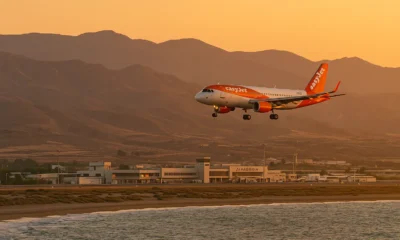
 Almeria News2 weeks ago
Almeria News2 weeks agoEasyJet launches new Liverpool–Almeria flight
-

 Events2 weeks ago
Events2 weeks agoAlbox All Saints Fair 2025 — Five Days of Music, Food & Tradition
-

 Almeria News2 weeks ago
Almeria News2 weeks agoRally Costa de Almeria 2025 — 50th Rally: Route, Timetable & Entries
-
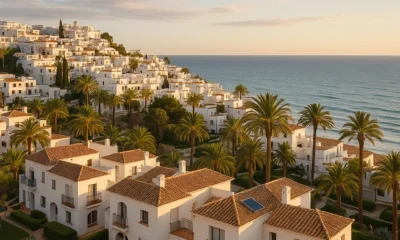
 Real Estate & Economy6 days ago
Real Estate & Economy6 days agoAlmeria Property Prices 2025: Vera Leads Andalusia with Record 72.9% Rise
-
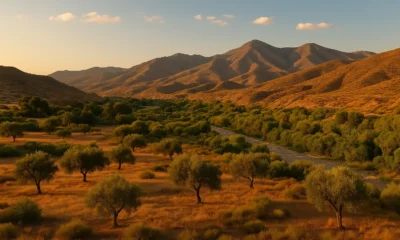
 Travel Tips2 weeks ago
Travel Tips2 weeks agoAlhabia Guide. Discover Alhabia, Almeria — Valley Life, History & Scenic Walks
-
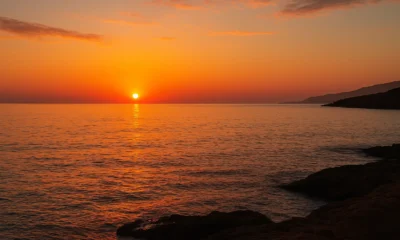
 Travel Tips1 week ago
Travel Tips1 week agoAlmeria City Guide. Discover Almeria City — Culture, Cuisine, History & Mediterranean Life




















